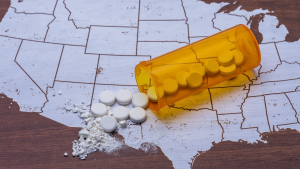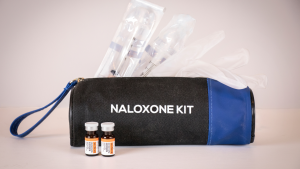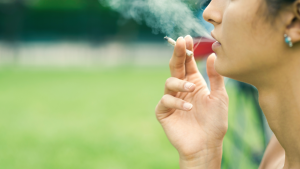Harm Reduction: Learn Why People with Substance Use Disorder are Using Cannabis
According to the Substance Abuse and Mental Health Administration (SAMHA), 15.4% of adult Americans, or 39 million people struggle with a substance use disorder. Of this number, 10% struggle with alcohol, with others struggling with prescription drugs, opioids, and stimulants. Overdose rates are at an all-time high, with the pandemic bringing on a 34.4% increase in drug-related overdoses in 2020. Between the years 1999 and 2020, preventable overdose deaths increased 649%.
SAMHA also declares that marijuana is second to alcohol in terms of addiction issues for Americans.
As we know, cannabis has been forever stigmatized, with fearmongering around its potentially addictive properties contributing to why it has been under prohibition for so long. However, as medical cannabis practitioners, we have witnessed medical cannabis as a tool for harm reduction. We have seen it save thousands from the grips and potentially deadly consequences of substance use disorder.
Here we will look at cannabis for harm reduction, including the “Marijuana Maintenance” program, and how so many are finding hope through cannabis. We will also address the question “Is cannabis addictive?” to help patients understand whether medical cannabis is right for them.
What is Harm Reduction?
Harm reduction isn’t about just telling people to stop using drugs, which many anti-drug campaigns seek to do. Instead, harm reduction initiatives recognize that there are many reasons why people use substances.
What does harm reduction mean? According to the National Harm Reduction Coalition, harm reduction is a set of practical strategies and ideas aimed at reducing negative consequences associated with drug use. Harm Reduction is also a movement for social justice built on a belief in, and respect for, the rights of people who use drugs.
Because substance use disorder is personal and individual, the National Harm Reduction Coalition says that there is no one or right way to implement harm reduction strategies. Harm reduction incorporates a spectrum of strategies that includes safer use, managed use, abstinence, meeting people who use drugs “where they’re at,” and addressing conditions of use along with the use itself.
One important aspect of harm reduction is that it views drug use as a public health issue, and not an activity that should be a punishable offense. Harm reduction examples include connecting individuals with education and health resources and distributing overdose reversal medications like Naloxone among drug users and community members. In the case of cannabis, using cannabis as a substation for more harmful substances like alcohol, opioids, or other harmful chemicals.

An example of a harm reduction strategy within the cannabis industry is that of SB-34, The Dennis Peron and Brownie Mary Act, which permits licensed cannabis operators to donate excess and expiring products at no cost to eligible patients. The bill was championed by Los Angeles NORML and the Veterans Cannabis Coalition, with the group stating that helping people substitute opioids with cannabis is one of the program’s biggest motivations.
Research on Cannabis and Harm Reduction
In recent years, there have been studies and initiatives emerge that look at the potential for cannabis as a tool for harm reduction for those who use substances.
Vancouver, British Columbia in Canada has one of the highest populations of people who use drugs in the world. A longitudinal study by BC researchers looked at how cannabis acts as a substation for illicit and harmful drugs such as heroin or other opioids, cocaine, methamphetamine, or alcohol. Over 2 years, they saw that 25% of participants used cannabis as a substitute for harmful drugs, most notably stimulants and opioids.
Last year, the University of New Brunswick in eastern Canada announced a partnership with a First Nation and a legal medical cannabis provider to assess the harm reduction potential of cannabis in reducing opioid dependency as well as dependency on methadone in Indigenous communities.
Using cannabis as a substitute for prescription drugs is also becoming more commonly studied. In 2021, a Danish study showed that of 2,841 survey 91% used cannabis, with half of those holding medical marijuana certifications with the purpose of replacing a prescribed drug.
Prominent researchers such as Dr. Ethan Russo, whose work we’ve featured over our patient education series are also taking a closer look at the potential of cannabis for treatment of addictions.
In his article “Taming THC: potential cannabis synergy and phytocannabinoid-terpenoid entourage effects”, he notes that certain terpenes, like beta caryophyllene, myrcene, and pinene act as a CB2 agonist, which plays a role in how the addictive brain responds to substances. He stresses CBD as a key cannabinoid for the treatment of addiction, rather than THC.
While research on cannabis for harm reduction is preliminary, it does show that many are turning to cannabis by getting their medical cannabis certification and as a result are avoiding use or more frequent use of other potentially harmful substances.
The Marijuana Maintenance Program
As mentioned in the start of this article, alcohol is the most prevalent substance use disorder among Americans. While there are many approaches to alcohol abuse, including Alcoholics Anonymous (AA), many of these programs require complete abstinence from substances.
The Marijuana Maintenance Program is one approach that is rising in popularity, yet it’s not without its skeptics. This approach involves using cannabis as a substitution for more harmful drugs, making it one harm reduction method.
Many have found success with this approach, yet critics believe that the Marijuana Maintenance program is simply substituting one substance for another, thus, one addiction for another.
Proponents of this approach argue that cannabis does help deter people from more harmful substances, and additionally that cannabis has proven medicinal benefits that are being increasingly accepted through legalization efforts.
Is Cannabis Addictive?
So, is cannabis actually an addictive substance that could further the addictions of people who use drugs? There are a few schools of thought on whether cannabis is addictive, which is a large contributor as to why prohibitionist laws still exist in the U.S. today.
One school of thought sees cannabis overuse as a potential psychological disorder. The Diagnostic and Statistical Manual of Mental Disorders added a condition called “cannabis use disorder” which has a list of eleven symptoms including a great deal of time spent in activities necessary to obtain cannabis, use cannabis or recover from its effects; recurrent cannabis use in situations in which it is physically hazardous; and craving or a strong desire or urge to use cannabis.
To be diagnosed with this mental disorder, a patient will have to display two of the 11 symptoms. It is then treated as a psychological disorder.
The other school of thought recognizes that, chemically, cannabis does not hold addictive properties similar to drugs like alcohol, cocaine, heroin, or other harmful substances, including everyday substances like nicotine. For the most part, if someone was to cease cannabis use, they may feel uncomfortable or urges to consume, but they will not experience overly drastic physical withdrawal symptoms.
When it comes down to it, when someone gets their medical cannabis certification, it’s up to them to use cannabis medicine with intention, gaining the best experience through education and choosing the best products for them. Early medical cannabis advocate Steve DeAngelo is known for saying “Use cannabis for wellness, not intoxication.”
Cannabis Harm Reduction to Cannabis as Harm Reduction
When states legalize, they are obligated to engage in cannabis harm reduction, meaning that they provide education and warnings to reduce the potential harms of cannabis such as impairment, smoking-related illnesses, and take necessary precautions to keep cannabis away from those under 21.
At Compassionate Clinics of America, we also believe that taking caution and precautions when using cannabis as medicine is necessary. We know that cannabis can be abused or overused. In these cases, psychoactive effects of high-THC cultivars (“strains”) overshadow the medicinal benefits of lower THC, other cannabinoids, and terpenes. (See our article 9 Practical Ways to Reduce a Powerful Cannabis Effect for tips for if you’ve overconsumed).
As medical cannabis practitioners, we place importance on the endocannabinoid system and how embracing all components of the plant through the entourage effect results in a more positive and productive cannabis medicine experience. Thus, while it’s important to educate about cannabis harm reduction, we also believe that cannabis has great potential within the harm reduction movement and that the narrative around cannabis has potential for change.
Get Your Medical Cannabis Certification with Compassionate Clinics of America
If you or someone you care about is a drug user and you are interested to explore alternative methods of treatment through the harm reduction potential of cannabis, reach out to us at Compassionate Clinics of America.
Our compassionate, board-certified staff and health care practitioners will walk you through the process of obtaining your medical cannabis certification so you can explore whether cannabis may help you in your journey toward your best life.























